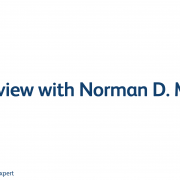In the rapidly evolving business landscape, Chief Human Resources Officers (CHROs) play a pivotal role in managing and mitigating human capital risks. These risks, if not adequately addressed, can significantly impact an organization’s ability to achieve its strategic objectives. Here, we explore ten critical human capital risks and provide strategies for CHROs to solve them effectively.
- Getting Talent Ready for Uncertainties Risk:
The global business environment is increasingly volatile, making it crucial for organizations to prepare their workforce for uncertainties. Failing to equip employees with the skills to navigate complex challenges can lead to strategic missteps, operational inefficiencies, and missed opportunities in times of crisis.
Solution: To get talent ready for uncertainties, CHROs should focus on building a strong risk culture within the organization. This includes fostering skills like complex problem-solving, analytical thinking, and adaptability among employees. One effective way to do this, as pursued by companies around the world, is by encouraging employees to become certified in risk management principles through programs such as the IRM’s Level 1 Global Enterprise Risk Management (ERM) exam. This certification provides a solid foundation in risk management concepts and practices, equipping employees with the knowledge and skills to identify, assess, and manage risks effectively. By incorporating this certification into professional development plans, organizations can not only enhance their risk management capabilities but also demonstrate a commitment to employee growth and resilience. Creating opportunities for employees to apply their learning in real-world scenarios further solidifies the risk culture, ensuring the organization is well-prepared to face future uncertainties.
- Talent Scarcity Risk:
The battle for top talent has intensified, with talent scarcity becoming a significant challenge for organizations across industries. This scarcity threatens to limit innovation, growth, and the ability to meet customer demands. The risk is especially pronounced in high-skill and rapidly evolving sectors such as technology, healthcare, and finance.
Solution: To combat talent scarcity, CHROs should focus on developing a robust talent pipeline through strategic workforce planning. This involves identifying future skill requirements, investing in training and development programs, and fostering a culture of continuous learning. Additionally, expanding recruitment efforts to untapped talent pools and emphasizing employer branding to attract passive candidates can also be effective strategies.
- Employee Turnover Risk:
High employee turnover can disrupt operations, incur significant costs, and erode organizational knowledge. It often reflects deeper issues such as employee dissatisfaction, poor management practices, or uncompetitive compensation packages.
Solution: Addressing employee turnover requires a comprehensive approach that begins with understanding the root causes. Conducting exit interviews, employee satisfaction surveys, and regular feedback sessions can provide valuable insights. Improving retention strategies, such as offering competitive compensation, career development opportunities, and fostering a positive workplace culture, are key to keeping employees engaged and loyal.
- Leadership Gaps Risk:
Leadership gaps pose a significant risk to organizational stability and growth. A lack of leadership depth can result in strategic misdirection, poor decision-making, and an inability to effectively manage change.
Solution: CHROs should implement leadership development programs that identify and nurture high-potential employees. These programs should focus on developing critical leadership skills, such as strategic thinking, emotional intelligence, and change management. Additionally, succession planning for key leadership positions ensures that the organization is prepared for transitions.
- Workplace Diversity and Inclusion Challenges Risk:
Failing to foster a diverse and inclusive workplace can limit innovation, employee engagement, and an organization’s appeal to a broader customer base. It can also lead to legal and reputational risks.
Solution: CHROs need to develop and implement comprehensive diversity and inclusion strategies. This includes setting clear diversity goals, promoting inclusive leadership, and ensuring equitable hiring and promotion practices. Regular training and awareness programs can help create a more inclusive culture that values diversity.
- Compliance Risk:
With ever-changing employment laws and regulations, compliance risks are a constant threat. Non-compliance can lead to legal penalties, financial losses, and damage to an organization’s reputation.
Solution: To mitigate compliance risks, CHROs should establish a robust compliance framework that includes regular audits, employee training, and a clear understanding of local and international laws. Investing in HR technology can also streamline compliance management by automating record-keeping and reporting processes.
- Technological Change and Skill Obsolescence Risk:
Rapid technological advancements can render existing employee skills obsolete, jeopardizing an organization’s competitive advantage and operational efficiency.
Solution: Continuous learning and upskilling programs are critical to addressing skill obsolescence. CHROs should invest in training initiatives that align with future technological trends and business strategies. Partnering with educational institutions and leveraging online learning platforms can also provide employees with access to relevant skills training.
- Employee Engagement and Productivity Risk:
Low employee engagement can lead to decreased productivity, poor work quality, and higher absenteeism. Engaging modern workforces, especially with the rise of remote and hybrid work models, presents new challenges.
Solution: Enhancing employee engagement requires a focus on meaningful work, recognition, and a supportive work environment. Implementing flexible work arrangements, providing opportunities for growth and development, and leveraging technology to foster collaboration and communication can boost engagement and productivity.
- Mental Health and Well-being Risk:
Neglecting employee mental health and well-being can have serious implications, including increased healthcare costs, reduced productivity, and higher turnover rates.
Solution: CHROs should prioritize mental health by implementing comprehensive wellness programs that offer resources and support for mental health issues. Promoting a culture that values work-life balance, providing access to mental health professionals, and training managers to recognize and address mental health concerns are essential components of a well-being strategy.
- Cultural Misalignment Risk:
A misalignment between organizational culture and business strategy can hinder performance and employee satisfaction. Cultural misalignment can result from mergers, acquisitions, or rapid growth.
Solution: To realign culture, CHROs must first clearly define the desired culture and its alignment with business objectives. Communicating these expectations, modeling desired behaviors at the leadership level, and reinforcing them through policies, recognition, and rewards can gradually shift the culture. Regularly assessing cultural alignment through surveys and feedback can help track progress and make necessary adjustments.
- Remote Work Challenges Risk:
The shift towards remote and hybrid work models has introduced new challenges in team cohesion, communication, and performance management. Without effective management, these challenges can diminish productivity and employee satisfaction.
Solution: To address remote work challenges, CHROs should implement tools and policies that support effective communication, collaboration, and project management. Establishing clear expectations, offering training on remote work best practices, and promoting a culture of trust and accountability are crucial. Regular check-ins and virtual team-building activities can also help maintain team cohesion and engagement.
By proactively addressing these eleven human capital risks, CHROs can safeguard their organizations against potential pitfalls and pave the way for sustainable growth and success. The key lies in adopting a strategic, holistic approach to human capital management that emphasizes agility, continuous learning, and a deep commitment to employee well-being and development.














